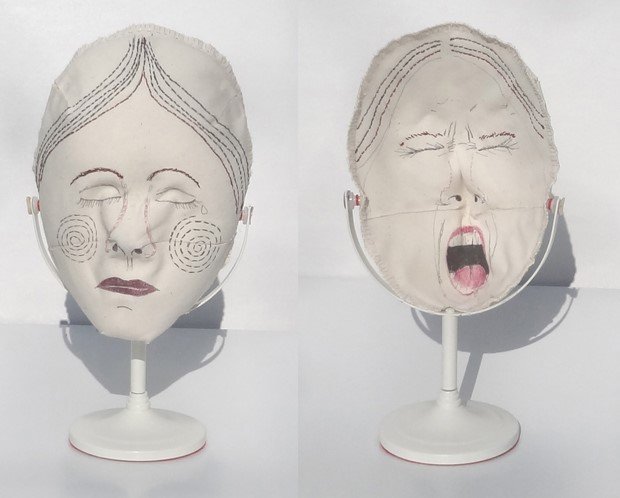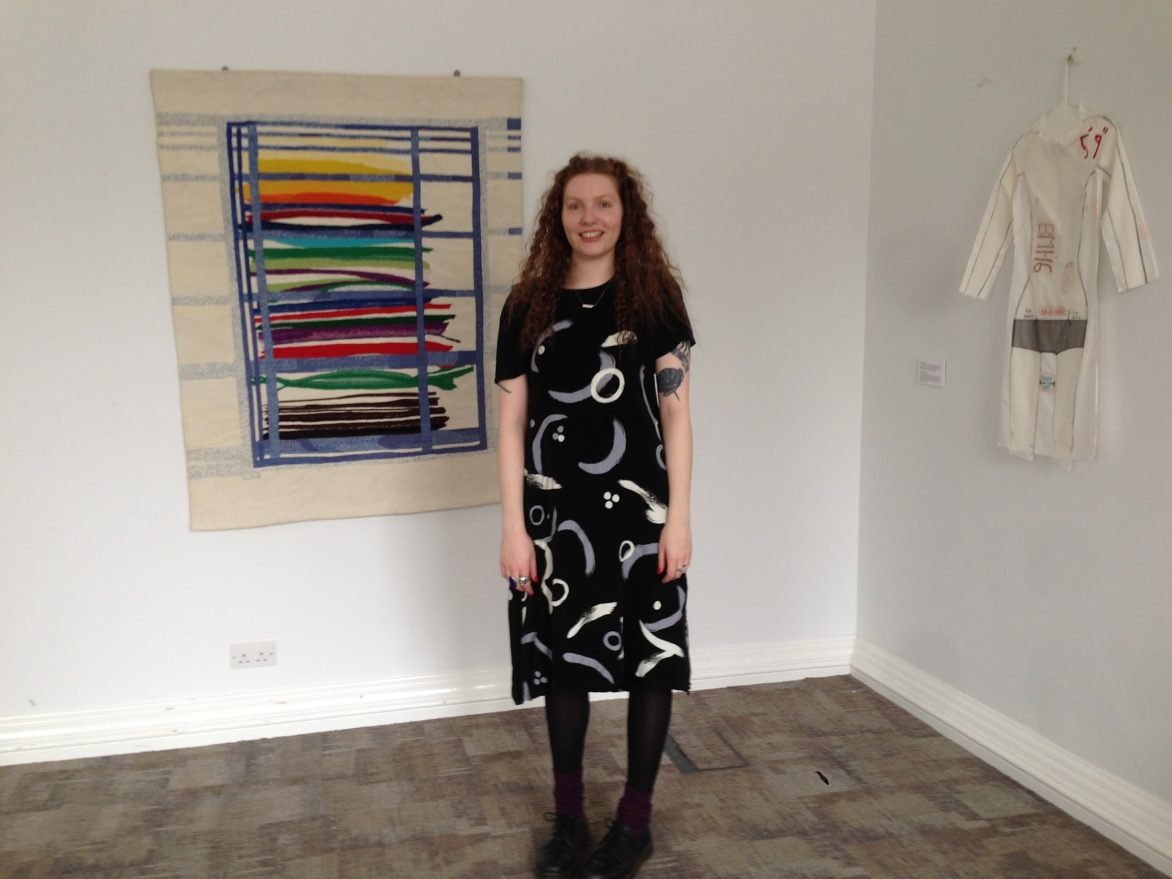My First Exhibition — And How You Can Do It Too
Rising youth board member, Jess Bunyan, reflects on her time curating her first exhibition as part of International Women’s Day 2018 and shares some useful tips about how you can do it too.
Whether you’re interested in curating, producing or putting on an exhibition of your own work, it can seem daunting to know where to start! In March 2018, I produced my very first exhibition of textile artists from the South West as part of International Women’s Day. *Full disclosure* I knew the organisers and had worked with them before so even though this was a new thing for me they knew I was good at stuff! It’s so important sometimes to just blag your way into things when you know you can do something but no one is going to give you the opportunity otherwise. Here’s the steps I went through and lessons I learnt so you don’t have to make the same mistakes!
1. Think of a Theme
First I came up with the theme of textiles. It’s a medium I work in and love and is generally associated with women so I felt it fitted well with the event and venue for International Women’s Day.
2. Source Your Artists
I then researched textile artists. Because I did not know many textile artists working locally, I mainly relied on Instagram and (surprisingly) Axisweb to find talented textile artists who could contribute to the exhibition. It’s all about being creative with where you find your artists. Rising’s artists are a good starting point – as well as artist studios in Bristol – who list all their current artists online most of the time, which is handy if you can’t visit or have missed the open days.
Then I contacted any that seemed to fit with the overall themes and style of the event. In hindsight, it’s a bit crazy that so many agreed – given I wasn’t offering payment, hadn’t produced an exhibition before and didn’t know any of them. But I did have the support of the event itself, it was only for one day and I wasn’t asking for new work, just whatever they had already. Out of the fourteen I contacted, eleven replied and seven made it to the final exhibition.
3. Finalise pieces and make an Exhibition Plan
I then liaised with those seven artists to pick pieces that thematically worked for the exhibition as a whole. I wanted to curate something with mass appeal given it was part of a wider event, but also wanted to acknowledge the politics alongside it. I ended up with two categories, ‘abstract’ and ‘political’. This helped dictate the flow of the exhibition and where to place things. I had two slightly awkward pieces, one floor sculpture and one hanging line. So I placed these first in the exhibition plan, the sculpture flanked by two large windows and the first thing you see from the door; the second over the fireplace. I sketched it out by hand first, then created a to-scale diagram in excel so I could move pieces around more easily.
Using Canva, I created a decent professional looking graphic and titled the exhibition ‘Consigned to Women’s Hands’ after a quote from the Subversive Stitch. I sent this out to all the artists and the event coordinators to promote across social media to reach as many people as possible. Being part of a wider event helped too as it was featured in their newsletter, programme and on the website in the run up to the day itself.
Then on the day before install it snowed! A lot. We managed to take some stuff down in the car before it got really bad but ended up picking up one piece and taking it by foot. Two other artists walked the pieces down from various bits of the city and unfortunately one was stranded in Stroud. This is where having an organised plan really paid off, as we could still carry on installing around the missing pieces and adapt.
By the end of the day, a meeting room in City Hall was transformed to look like a genuine exhibition space. One of the councillors commented on how great the room looked and wanted it to stay that way! Because the room wasn’t a traditional gallery space, and we were only going to be using it for a day, I used temporary fixings and tested them beforehand so no pieces were in danger. We moved some framed pieces to the fireplace to be on the safe side. When adding the finishing touches, I projected the exhibition title info onto an un-moveable interactive whiteboard and stuck the mounted info cards for each piece nearby.
The event itself had 6,000 visitors and the exhibition had 400, in just one day! There was a variety of ages and engagement across the board. There were 11 comments in the surveys from the day mentioning the exhibition specifically as their highlight. It was also a great networking opportunity and in hindsight I should’ve branded myself more! Ultimately though it was a way of proving (to myself) that I could produce an exhibition to a really high standard.
Here are the things I learnt:
1. Have as much in place as possible before you contact the artists.
2. If you can’t pay artists, be upfront about it and make sure they are getting something out of it and don’t ask for too much (eg. new work).
3. Partner with someone. Click here to check out our recent blog post on Good Partnership Practice.
4. Do some proper art handling training (RWA volunteer programme offers it)
5. Brand yourself, bring business cards and talk to everyone.
Also, read this.



